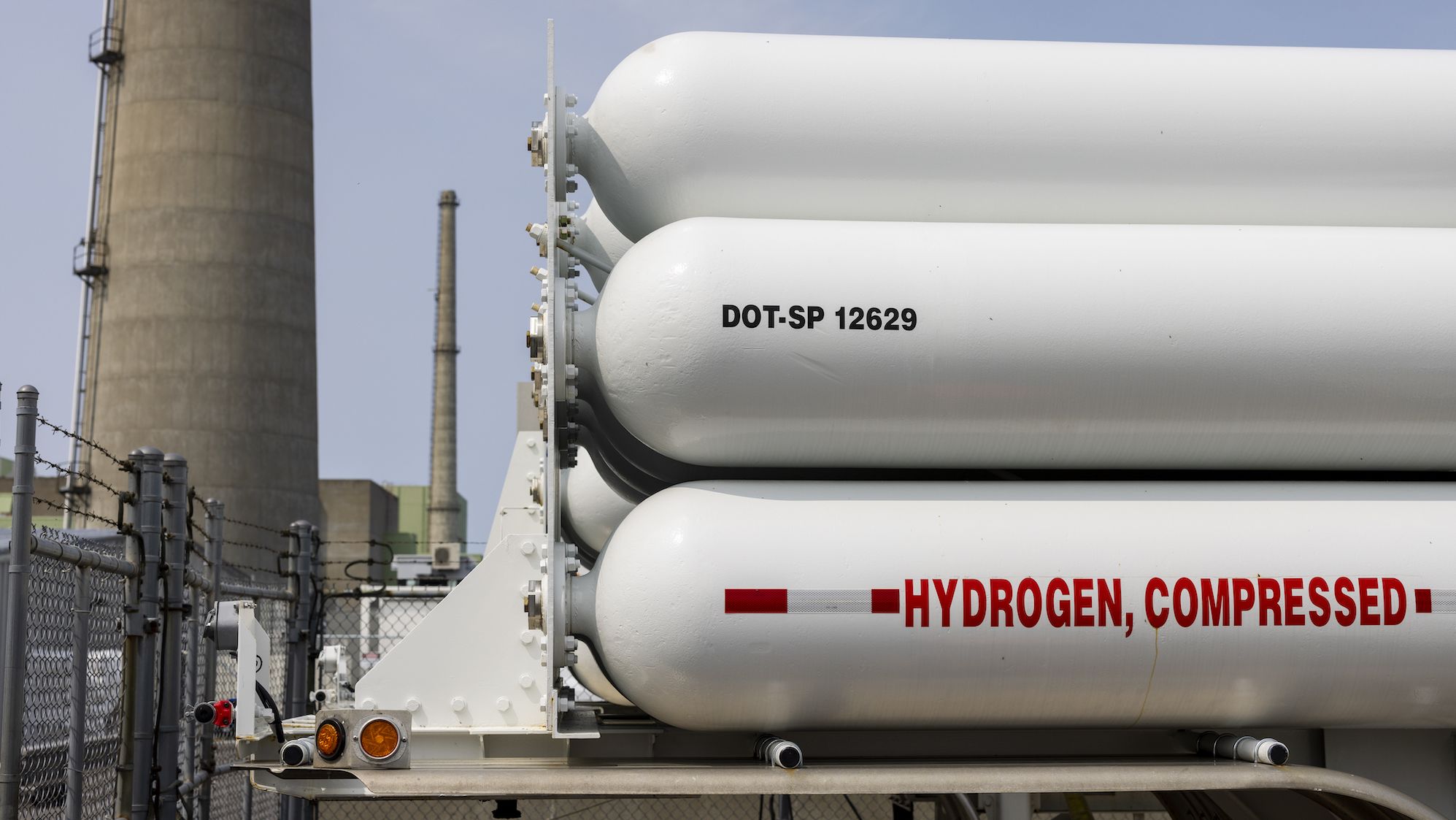The Biden administration issued long-awaited preliminary guidance Friday on its expansive clean hydrogen tax credit, tilted in favor of hydrogen produced from clean electricity.
The hydrogen tax credit is one of the most generous subsidies contained in the Inflation Reduction Act — giving companies up to $3 for every kilogram of hydrogen produced. Along with other government initiatives, the US Treasury’s proposed tax credit is designed to help jump-start a nascent industry in the US that could ultimately be used to help decarbonize heavy industry and large vehicles like planes, ships and freight trucks, which can’t yet be effectively powered by renewables like wind and solar.
“It’s an important tool as we carve a path towards net-zero emissions by mid-century,” White House senior adviser for climate John Podesta told reporters.
With billions of federal funding at stake, a debate has been brewing over what constitutes truly clean hydrogen. Producing hydrogen is an energy-intensive process, and to be truly clean, it needs to be made using zero-carbon sources of electricity.
Green hydrogen is made using renewable energy to split water, while pink hydrogen is produced using nuclear energy. Fossil fuel leaders, however, have been pushing the government to include subsidies for blue hydrogen, produced using planet-heating methane gas, but with promises that carbon pollution would be captured and stored.
On Friday, the US government released stringent proposed rules that, while not favoring any one power source over another, give the most generous tax credits to producers who make the cleanest hydrogen. The proposed rules take into account planet-warming pollution throughout the entire lifecycle of hydrogen production.
“The lower the emissions, the larger the credit,” Deputy Treasury Secretary Wally Adeyemo told reporters, noting the tax credit starts at 60 cents per kilogram of hydrogen and goes up to the most generous credit of $3 per kilogram.
Companies who produce hydrogen with clean electricity, or methane gas generated by landfills and fugitive methane captured from coal mines or coal beds, are eligible to receive the credits. Administration officials are still gathering details on whether low-carbon natural gas could be included in the future.
Hydrogen is poised to be a massive new industry in the US and worldwide. Currently, the US produces less than 1 million metric tons of hydrogen per year, many of which are derived from fossil fuels. The Biden administration has set a goal to multiply that output 50 times by 2050 – and federal estimates say this goal could cut US planet-warming pollution by about 10% by 2050.
“That’s equivalent to the amount of energy currently used by every bus, every plane, every train and every ship in the US combined,” Deputy Energy Secretary David Turk told reporters. “There’s a huge, huge potential and opportunity here.
That 10% may not seem like much, but it could play an important role in cutting the most stubborn pollution in the US that comes from energy-intensive big industry and large transportation. These sectors can’t meet pollution goals as easily from clean electricity as small cars and the power sector can.
Given the increased demand for electricity to power cars, appliances, buildings and now hydrogen, there are still a lot of questions about just how much electricity this new hydrogen industry will gobble up – and where all these clean electrons will come from.
“This is really crucial to ensure that grid-powered hydrogen is not increasing overall emissions,” said Morgan Rote, director for US climate at the Environmental Defense Fund. “If we get hydrogen wrong, we risk wasting tens of billions of dollars and a lot of precious time that we need to solve the climate crisis.”
The proposed guidance also sets guardrails around green hydrogen and the kind of electricity that can be used for production. Green hydrogen facilities will take vast amounts of electricity to power the electrolyzers needed to separate hydrogen from oxygen in water. Therefore, to ensure this hydrogen is actually clean, electricity itself must be clean and abundant.
Administration officials are looking to phase in a set of complex rules with a simple goal – that hydrogen companies don’t guzzle up all the clean energy on the electric grid needed to power homes, vehicles, and appliances, or use energy from dirtier sources like coal or natural gas.
“For hydrogen production produced using electricity, the proposed rules require companies to use new, deliverable clean power generated annually, with a phase-in to hourly generation,” Adeyemo said. Starting in 2028, hydrogen facilities will have to use clean power generated in the same hour it’s being used for production.
The Biden administration’s strict approach to ensure hydrogen production isn’t adding more pollution to the atmosphere has been criticized by some Democratic senators, including Sen. Joe Manchin of West Virginia.
In a letter last month, 11 Senate Democrats, including Manchin, said they were concerned stringent Treasury guidance could hurt the hydrogen industry as it tries to get off the ground. But administration officials said that without stringent guardrails and third-party monitoring on compliance, emissions from the hydrogen industry could balloon.
“Without this model and the environmental integrity in the way we set this up, there’s a high risk of the [this] powerful tax credit could subsidize hydrogen projects with as much as twice the climate pollution of conventional production methods,” Turk said.
Turk and other officials stressed that the federal government has not get finalized the Treasury regulation and are seeking more information on how nuclear and other forms of energy could fit into the credit’s structure.





